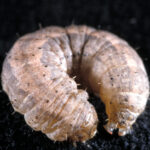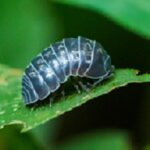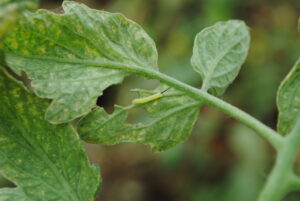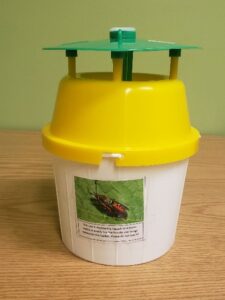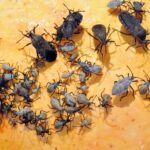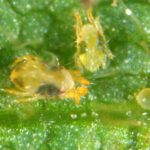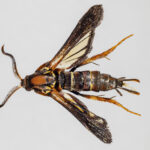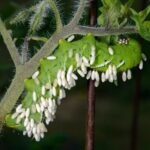Each year we get several reports of seedlings being cut at or near the base of the plant/soil surface. The critter who gets the blame most often is cutworms. And that makes sense because the damage is in the name. However, with closer inspection, it seems that the blame can often be misplaced. There are[Read More…]
Background Pillbugs, roly-polys, and potato bugs are the dominant common names for the isopod genus Armadillidium spp. As the scientific name suggests, these little critters resemble mini armadillos but are, in fact, crustaceans that live on land (Figure 1). Therefore, they are more closely related to lobsters, crabs, and shrimp than insects. Pillbugs are important[Read More…]
The warm weather of late did not only pull us out of our winter slumber but definitely awoke some of our overwintering pests as well. Cucumber beetles and seedcorn maggots are likely on the hunt for food, and your early-season crops may be exactly what they are looking for. Striped cucumber beetles (Figure 1) are[Read More…]
In your propagation/seeding house, you are setting the stage for the remainder of your growing season, and there are a few key things I would like to remind you about to minimize pest issues at this crucial stage. Cleanliness is key! Make sure you start with clean trays for any transplants you may be generating.[Read More…]
There are many traps available to help with monitoring insect populations. As you prepare for the 2023 growing season, I would like to review some of them in case you want to implement trapping on your own farm to help improve your pest management programs. Trap Design. Traps come in a variety of shapes, sizes,[Read More…]
Registration is open for the 2023 Indiana Small Farm Conference! Join us for the event at the Hendricks County 4-H Fairgrounds and Conference Center in Danville. Gain practical, hands-on guidance from leaders and experts at the 2023 Indiana Small Farm Conference. This 11th annual event takes place in Danville on March 2-3. If you haven’t[Read More…]
Squash bugs and cucumber beetles (both spotted and striped) are in full swing this time of year on your cucurbit crops. We no longer have to worry about flowers developing into harvestable fruits, so it is a time that you need to think strategically about insect pest damage thresholds in relation to the decision to[Read More…]
Two-spotted spider mites (TSSM) are one of the most common mite pests occurring throughout the world. They are known to feed on over 300 plant species, including tomatoes, cucumbers, melons, grapes, apples, and a variety of common flower and weed species. They disperse by walking or floating on the wind currents. Early infestations can be[Read More…]
This is my second year coordinating a bucket trap network to monitor squash vine borers. And, for a second year in a row we are witnessing some interesting organisms in the trap. The first of which is the unfortunate capture of pollinators. This is nearly unavoidable because of the color attraction; yellow mimics flowers, but[Read More…]
The tobacco hornworm is one of the most devastating tomato pests in Indiana, if left unchecked. There are several natural enemies that help suppress this pest, such as stilt bugs (Figure 1), spined soldier bugs (Figure 2) and the parasitoid Cotesia congregata (Figure 3). Often, these natural enemies are not abundant until later in the[Read More…]

